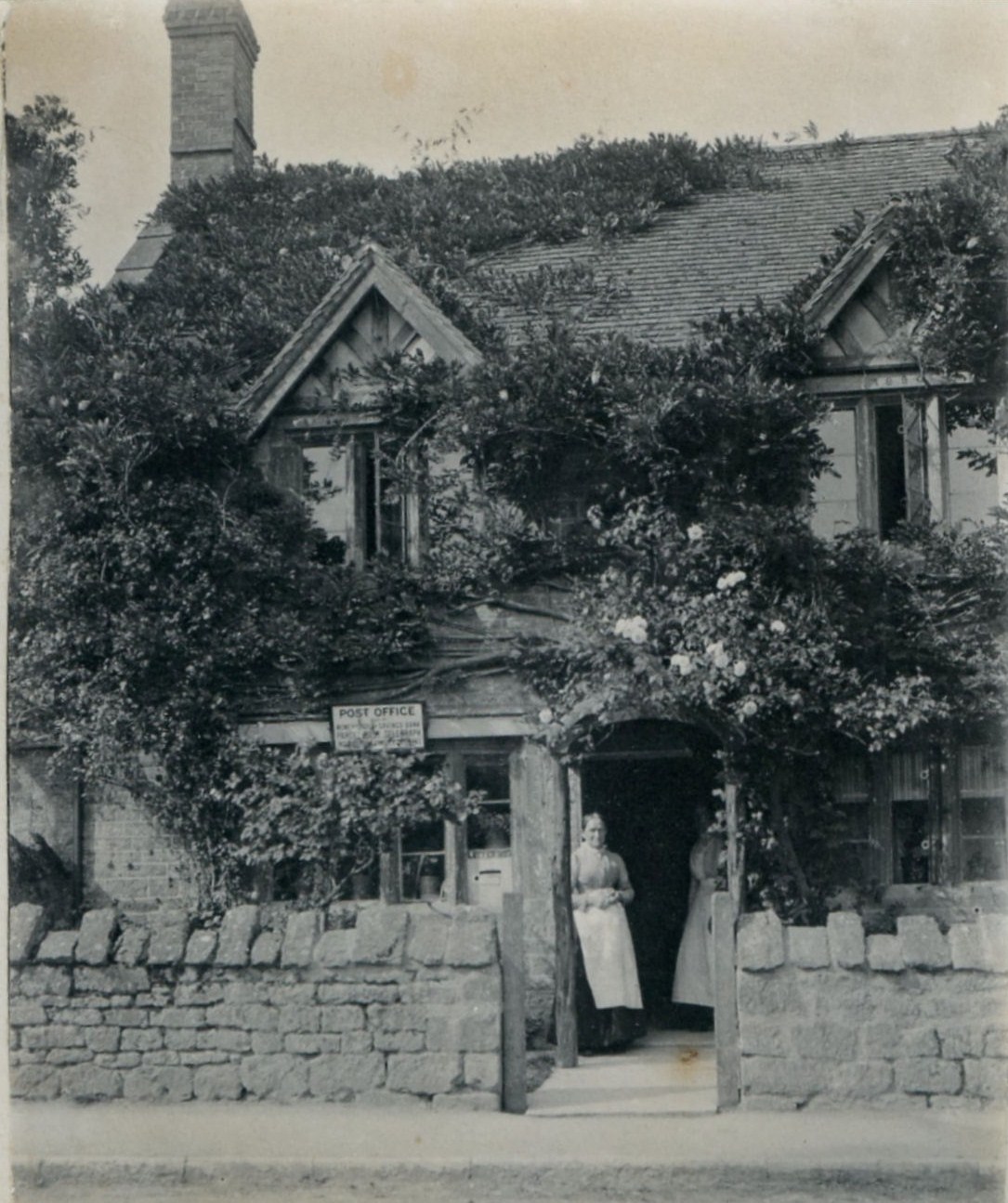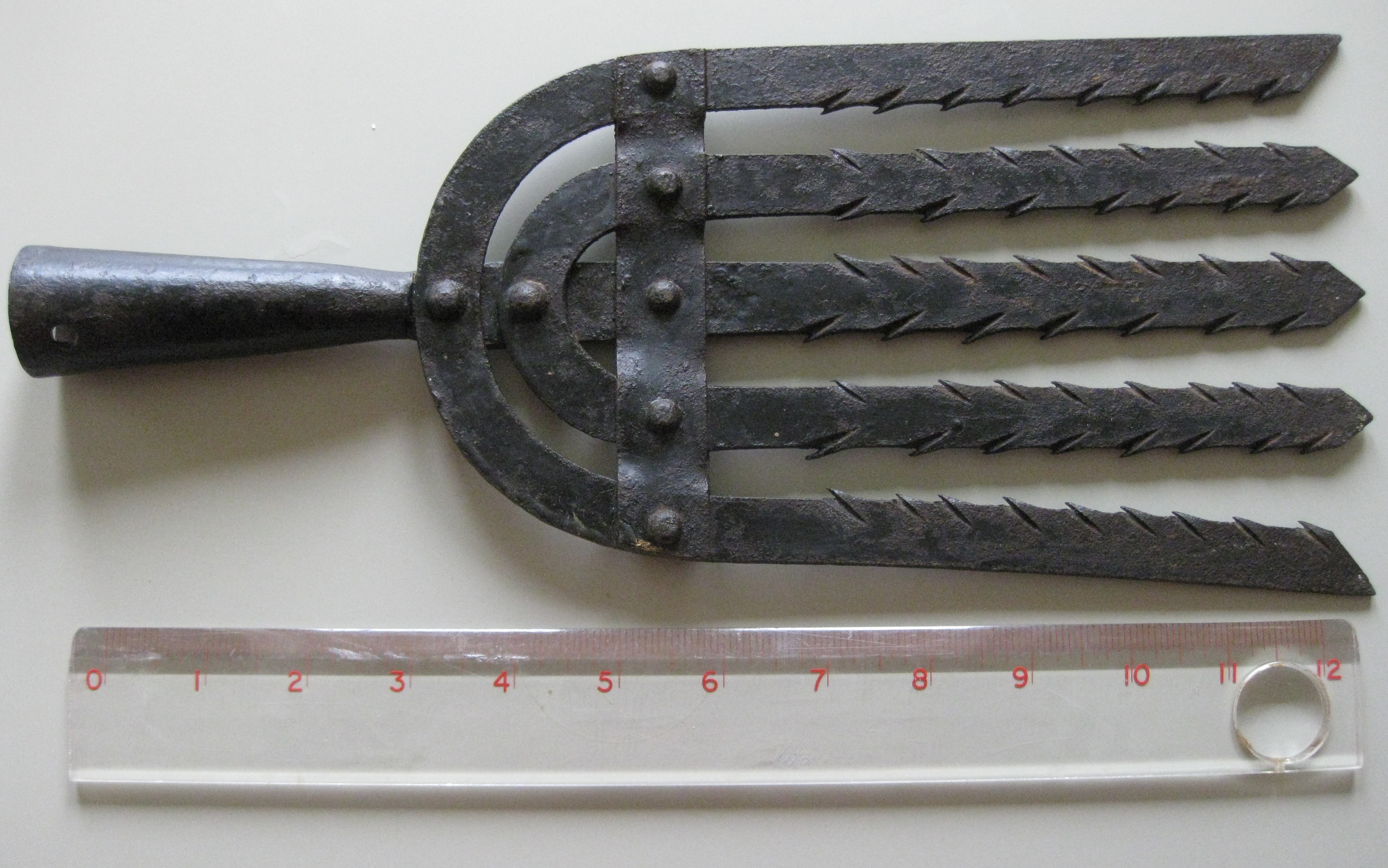Identifying a mystery object
Posted on 18th November 2014
Barbara Elsmore tells the fascinating story of an unusual object which she first encountered as a child in her grandparents’ home in Nether Compton and with which she was recently reunited in Sherborne.
Ann-Marie Wilkinson, in her Chairman’s musings in the latest Greenwood Tree, ponders on souvenirs and other items that our ancestors might have collected and prized and she suggests we should ask our relatives, if we can, why these items might be important to them. I very much regret not asking my grandfather about one such item that puzzled me greatly; an item that I have recently been reunited with, in a convoluted and surprising way, after exactly forty years. Firstly I will take you back to the 1950s when my brother and I would be taken to stay with our grandparents who lived in what we considered to be the most wonderful place we could imagine – a rambling cottage in Nether Compton, Dorset. On wet days, when we couldn’t be outside, my brother would say to me ‘let’s go exploring’ and this would mean we would visit each room in turn and have a really good hunt around as there was much to be investigated. There were cupboards and trunks and a large screen in one of the rooms with a whole pile of forgotten things behind it to be gone through by us. There would be tables with a drawer at the end where the detritus from the three generations of our family who had lived in the cottage had accumulated and we had great fun turning these out and sorting through the intriguing contents. I remember we found my grandfather’s WW1 medals at the back of one of these drawers.

The Nether Compton Post Office. Photograph taken on a lovely summer day c.1900 with Mrs Fanny Collings, and possibly her daughter Beth, awaiting customers.
The Office was especially interesting as the village post office had been run from here many years ago and the high stool and bench and pigeon holes, now filled with a variety of odds and ends, would keep us quiet for hours. In the corner of this room was a little stove which had not been lit since the days of the post office. On the top of the stove there lived a heavy five-pronged fork and my brother and I would routinely hold it, marvelling at its weight and wondering what it was. As it sat on the little stove our guess was it might be for toasting something on the fire – maybe chestnuts? I am sure my dad did not know as we were bound to have asked him at some point as he enjoyed our rootling around nearly as much as we did. My granny, Rose Collings, died in 1974 and the cottage had to be cleared. One of her kindly neighbours was helping and she told us that the ‘eel catcher’ had been taken to Sherborne Museum and she was informed that it was a better specimen than the one they already had.
We were all really surprised to find out the original purpose of the item and I remember wondering how on earth you could catch an eel with it and where would you find an eel to catch? Growing up in Uxbridge I remembered peering into the top of the galvanised tank of water outside the fishmongers and seeing several eels coiled around the edge.
Now we move forward forty years and having come to live in Sherborne I am a volunteer at the museum. One of the other volunteers was working on the temporary loans. Items at the museum fall into two categories those that have been ‘accessioned’ and those on ‘temporary loan’. The paperwork for both types of items must be very rigorously in place as once accessioned an item becomes the permanent property of the museum. Items that are ‘on loan’ are treated differently as these can be displayed and retained until they are returned to the original owner. It was the loaned items being processed and a page of names of people who needed to be contacted was sent by email to the volunteers to help trace the original owners and there in the middle of the page was the name Mrs Collings, The West House, Nether Compton with an unnamed item on temporary loan since 1974. I immediately emailed back and said ‘is it the eel catcher?’ and the reply came back ‘yes and it’s yours’. The paperwork was duly sorted and the eel catcher was returned to me. This time the internet answered all sorts of questions for me. The first thing I learnt is that it is an eel ‘spear’ and it would be used in the winter when the eels could be speared while settled in the mud at the bottom of a stream or river. It would have had a long handle, up to 12 feet in length and made of ash. The Trent Brook flows through Nether Compton so perhaps the spear was used there? The eels would be damaged with this type of catching so it appears they would only be good for immediate use and could not be sold on. Were they caught by men to take home to feed the family? Did my grandfather use it? Somehow I think not, otherwise my dad would have known what it was and what it was used for. Perhaps it was my great grandfather or even my great, great grandfather as he lived originally on the Somerset levels where there was no shortage of water. Why oh why didn’t I ask my grandad? He must have had a reason for it to be kept in the house rather than in one of the outbuildings or the workshop which would have been a more fitting home for it.
The eel spear is made of flattened iron and I found one so similar on Birmingham Museum’s website that they looked as though they could have been from the same maker. I have written to the museum with photos to see what they can tell me. I have also been asking around to see if anyone has any knowledge of eel fishing in the area and I have had positive reports of it taking place in the Cerne River valley but I have lots more to learn. I am still very surprised by the way this wonderful old item has come back into the family. If my granny’s kindly neighbour had not taken it to the museum it would likely have been discarded long ago but now it has been returned to me I am enjoying finding out more about something that has some of my family history locked into it and I am hoping it may give up its secret if I keep looking hard enough.
Barbara Elsmore
For more information on eel fishing and conservation today please see: http://www.eelregulations.co.uk/cont-008.html

